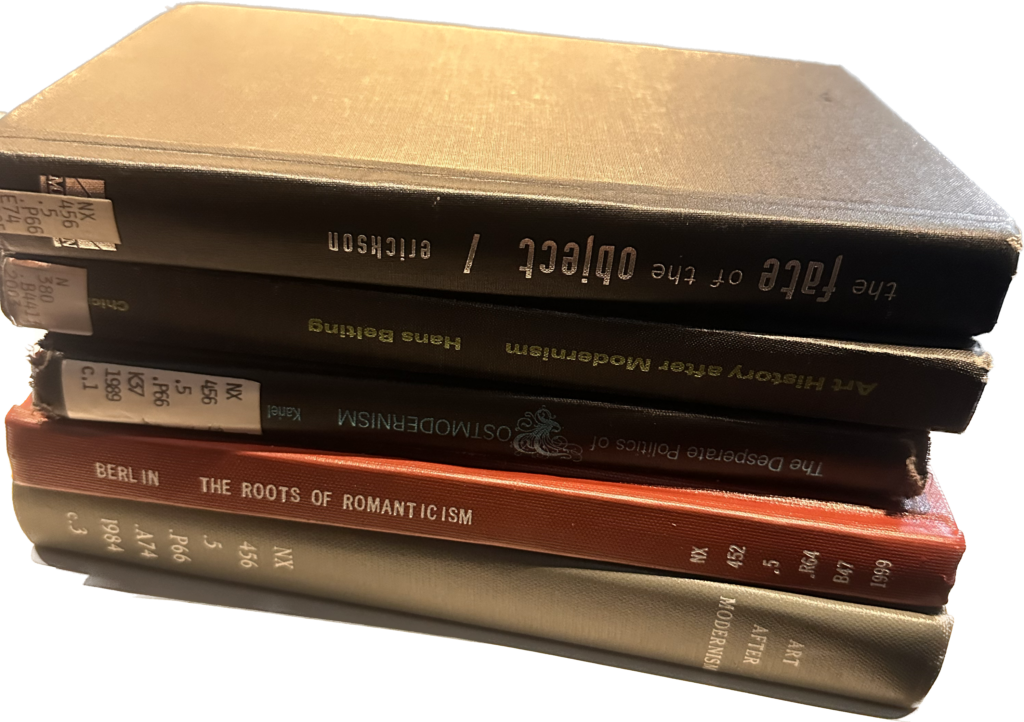In these final weeks of research, I’ve focused on understanding the contemporary artistic crisis we face today, particularly its ties to the legacy of Romanticism. My exploration has centered on how modernization and the socio-political changes of the Romantic period forced art into an autonomous sphere, now known as the art world. Nicholas Wolterstorff’s theory of the “grand narrative of art” has been pivotal in guiding my understanding. The core idea of this “grand narrative” is that the primary way to engage with art is through contemplation—a focused, disinterested attention where the work is appreciated solely for its aesthetic qualities. This marked a significant departure from pre-Romantic models, where art was deeply integrated into religious and social practices.
Drawing from Herder’s ideas, I’ve come to see how valuing historicism and cultural relativism in artistic contemplation led to this model of disinterested attention. However, Herder’s theories were merely the catalyst. The most influential force in the creation of the modern art world was the cultural elite of the eighteenth century. They transformed art into a marker of social distinction, where the ability to appreciate fine art became a sign of cultivation and refinement. This structured environment, centered around disinterested contemplation, initiated the alienation of art from its social functions.

Throughout my research, I explored why the art world, formed during the Romantic period, has led to an artistic crisis. In part, the crisis stems from the underlying teleological narrative in Western thought. Although Romanticism was a rebellion against Enlightenment ideals, it didn’t extinguish the underlying belief in progress; it simply redefined it. The Enlightenment’s belief in progress toward harmony was replaced by the Romantic ideal of progress toward freedom. This freedom, as conceived by the Romantics, is intangible and elusive—an ever-receding horizon rather than a fixed destination.

This elusive ideal has made freedom a potent and enduring concept in art. The vitality of art under the disinterested contemplation model depends on its ability to resist finality and continually pursue new, unattainable ideals. However, the Romantic emphasis on art’s transcendence of reality has isolated art from practical social functions and altered the psyche of the artist. The post-Romantic sphere of art developed an indefinable and immeasurable artistic ideal: genius. Romantic artists were not striving to achieve a specific technical aesthetic ideal; rather, their social value hinged on the cultural elite’s recognition and bestowal of the elusive and transcendent title of genius. As Hauser explains, the Romantic concept of genius is a myth perpetuated by artists, poets, and thinkers who sought to claim the privileges of an “aristocracy of the spirit.” This notion of genius, whether believed to be divinely or naturally bestowed, served to elevate artists’ social status, allowing them to mask their origins through their achievements (Hauser, 115). This myth has contributed significantly to the isolation of artists from everyday society. Understanding that the purpose and value of art, which I once believed to be innate, are actually products of Western history has allowed me to think more expansively about my own practice.
Hauser, Arnold, and Kenneth J. Northcott. The Sociology of Art. Routledge, 2011.
Wolterstorff, Nicholas. “Philosophy of Art after Analysis and Romanticism.” The Journal of Aesthetics and Art Criticism, vol. 46, 1987, pp. 151–67. JSTOR, https://doi.org/10.2307/431272.